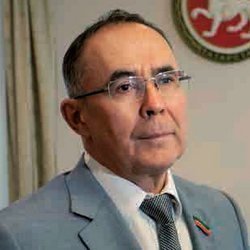‘There are no seeds, equipment, or manpower’ — problems of flax and hemp growing discussed in Kazan
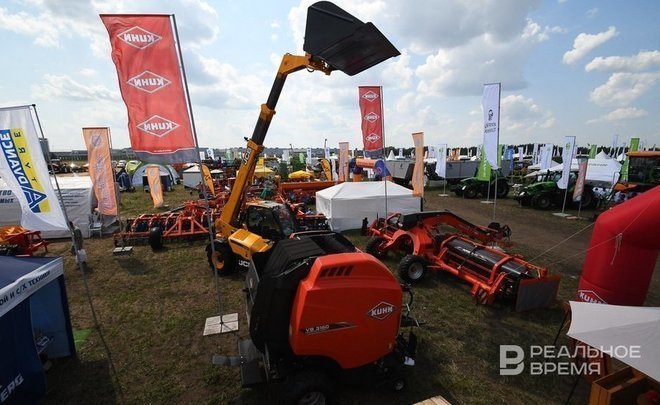
This year, the acreage of flax and industrial hemp has sharply increased in Tatarstan: for the first crop — twofold, up to 2,4 thousand hectares, for the second — six times, although it is still not enough, agrarians note. In flax growing, the increase fell on a new producer: now flax will be grown in the fields of the Almetyevsk district. In general, only four enterprises work in this segment of the agro-industrial complex, and as their managers told Realnoe Vremya, their farms are now facing serious problems that they are trying to solve with the support of the republic. Read the details in the material of Realnoe Vremya.
“Equipment for working with flax is not produced in Russia”
The first Tatarstan farms in which flax cultivation and processing began are located in the village of Ileber of Sabinsky district — these are Sabylen PLC and Lyon PLC. Both agricultural firms perform a full cycle — from sowing to fiber production. The area of sowing is about 600 hectares. We started working in 2010, at the same time, we purchased all the necessary machinery and equipment in Belgium. Rasil Gabdrakhmanov, the owner of the companies, also works there to this day.
“At the expense of state support and credit funds in 2010, we bought a full set of equipment. But now it is becoming obsolete, and there is nothing to replace it with. We would like to update it, but it is very problematic to do it now. We would like to buy a new one, but in Russia, they simply do not produce equipment for working with flax. Rossellmash has been promising to launch such a line for a long time, alas, these promises remain only in words. The situation is the same with the equipment for the flax processing plant. Now there is only the plant named after Korolev, which has existed since Soviet times and produces some kind of equipment, but it is already obsolete," Gabdrakhmanov complained.
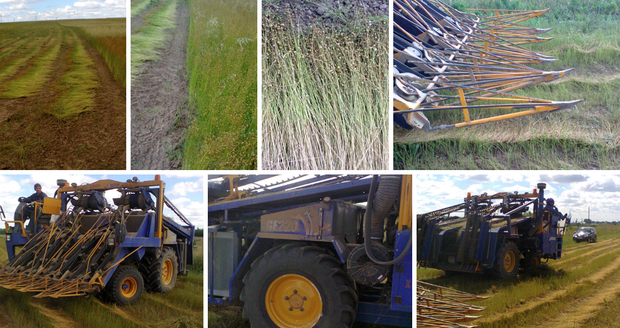
As the agricultural producer admitted, now the farm is trying to revive the equipment on its own. Some spare parts are purchased in Kazan or other cities, others are ordered from intermediaries in Europe:
“Details from Europe are brought to us by roundabout ways. But one should understand that this method of acquisition has become three times more expensive and the process takes much longer. The price has risen the most not for the spare part itself, but for its delivery," the owner of the company explained.
Rasil Gabdrakhmanov, together with colleagues working in the same industry, looked for ways out of this situation at a round table discussion where they discussed the state and prospects for the development of flax and hemp growing in Russia within the framework of the recent exhibition Field Day 2023.
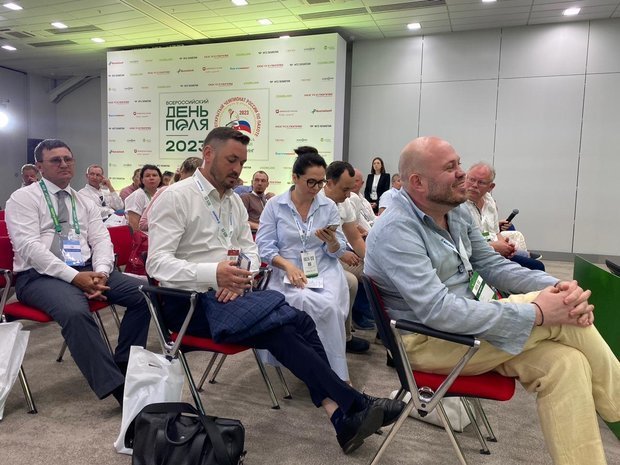
As the interlocutor of the publication noted, there is always a demand for flax. The company sells its fiber in Russia (mainly to Moscow Oblast), and to China. Long fiber is used for the production of clothing, short fiber is used for the production of insulation materials, cellulose, katanin, and other products.
“The quality of flax directly depends on the weather. For example, there is a drought this year, and we will not get long fiber at all, because the crop does not grow without water. As a result, this year there will be only short fiber. In general, the yield forecast is not encouraging. Most likely, it will be possible to get only 30% of the volume of last year's harvest," the entrepreneur complained.
“You can't give all the fiber to China”
As it turned out, the supply of Russian flax fiber to China has become a big problem for Russian factories that have been left without raw materials, since everything is for exports. Maxim Uvarov, the founder of Smart Hemp, a full-cycle production complex of bast crops: from sunflower seeds to yarn, told about this problem. Industrial hemp is cultivated in the fields of enterprises in Nizhny Novgorod Oblast, processed, they make yarn, sew clothes and sell it, in addition, medicines, cosmetics and other products are manufactured. At first, they produced products only from foreign raw materials, then switched to their own. This year, they also began to grow flax. The reason is precisely the lack of Russian fiber.
“We are faced with that there is simply no fiber for us in Russia. The textile factory that we have launched in Ivanovo Oblast processes 500 tonnes of fiber a month. Fiber in the country for our purposes ran out in the winter. We have to import raw materials from Belarus, but its quality is very low, plus suppliers constantly raise prices, selling for $1,250, and last year the price did not exceed $650. There is also very little high-quality fiber in Russia, all high-quality raw materials are exported. I come to the factory, ask for fiber, but they tell us that everything has already been sent to China. We need a quota programme for flax mills so that they do not give everything for export. We are ready to pay the same money, just give us fiber," Maxim Uvarov outlined the problem.
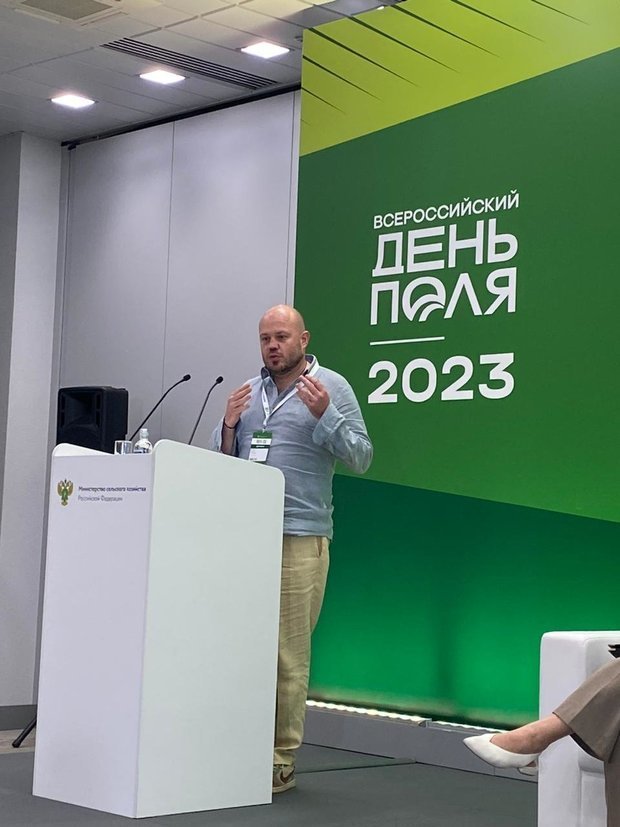
Due to the lack of raw materials, the company has decided to grow flax itself this year. It was sown on an area of 1,276 hectares, but another problem arose — there is no agricultural machinery.
“For harvesting cannabis, we have combine harvesters Don. We ourselves, together with Rossellmash, started making them in 2017, but there are few of them. Now the last three combines have been taken away by Soyuz Agro agrofirm, Tatarstan. That's it, there is no more equipment, and it is unrealistic to bring it from Europe. But if there is still hope with the hemp equipment, it just needs to be produced in larger quantities, then there is no flax equipment at all. European price tags are exorbitant. You have to enter with a price tag of 1 million euros for 300 hectare . This is a huge investment. The same problem is with the equipment. If you order from Europe, it may not get there. I have already had such a case — the order was cancelled. At the only factory named after Korolev, they are not ready to make equipment according to my requests. And there are no domestic seeds either, and there are no manpower," the hemp grower listed all the pressing problems.
“The subsidy criteria should be changed”
The representatives of the industry agreed to submit for discussion a change in the criteria for the distribution of subsidies. The greatest financial support should be given to those who give more products, and not sow more hectares, according to Roman Nekrasov, the director of the Department of Plant Production, Mechanisation, Chemicalisation, and Plant Protection of the Ministry of Agriculture of Russia.

“Science and business need a closer bond. For its part, the Ministry of Agriculture of Russia will encourage the purchase of equipment, the construction of seed production facilities, and the creation of processing facilities. Together with the Ministry of Industry and Trade, our main task is to make a unified strategy for the development of the industry with long-term, clear rules of the game," the speaker concluded.
“The old ways are the best ways”
The acreage of flax in the republic has amounted to 2,350 hectares this year. Compared to last year, this is an increase of 1,257 hectares. This was told by Renat Nugmanov, the deputy head of the Department for the Development of Agricultural Industries of the Ministry of Agriculture and Food of the Republic of Tatarstan. The increase was mainly due to the agrofirm Soyuz Agro LLC, which this year for the first time sowed 1,057 hectares of flax in the Almetyevsk district. Besides, 583 hectares belong to Sabylen PLC of Sabinsky district, 510 hectares belong to Mustafin farm in Mamadyshsky district, and 200 hectares belong to Kozlov farm in Novosheshminsky. The varieties Tomsk 17 and TOST are mainly cultivated.
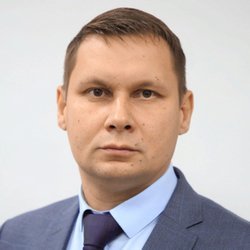
At the same time, there are very few areas for technical cannabis in Tatarstan — only 624 hectares, and last year there were only 99 hectares. The increase this year has been also due to the beginning of the development of this crop in the agrofirm of Soyuz Agro PLC, this year 600 hectares of technical hemp have been sown there. Another part of the crops on 24 hectares is owned by Agromelioration PLC in the Novosheshminsky district. It is worth noting that they began to engage in this crop in Tatarstan only in 2021.
“Under the co-financed article, a state subsidy is provided for the provision of unrelated support at the rate of 25 thousand rubles per 1 hectare of acreage of these crops. Today, 27,3 million rubles have been brought to farms, by the end of the year this amount will increase to 40 million," the source told the publication.
In the 1960s, both flax and hemp were sown in our country on very large areas, recalled the deputy chairman of the Committee of the State Council of the Republic of Tatarstan on Ecology, Nature Management, Agro-industrial and Food Policy, Takhir Khadeev.
